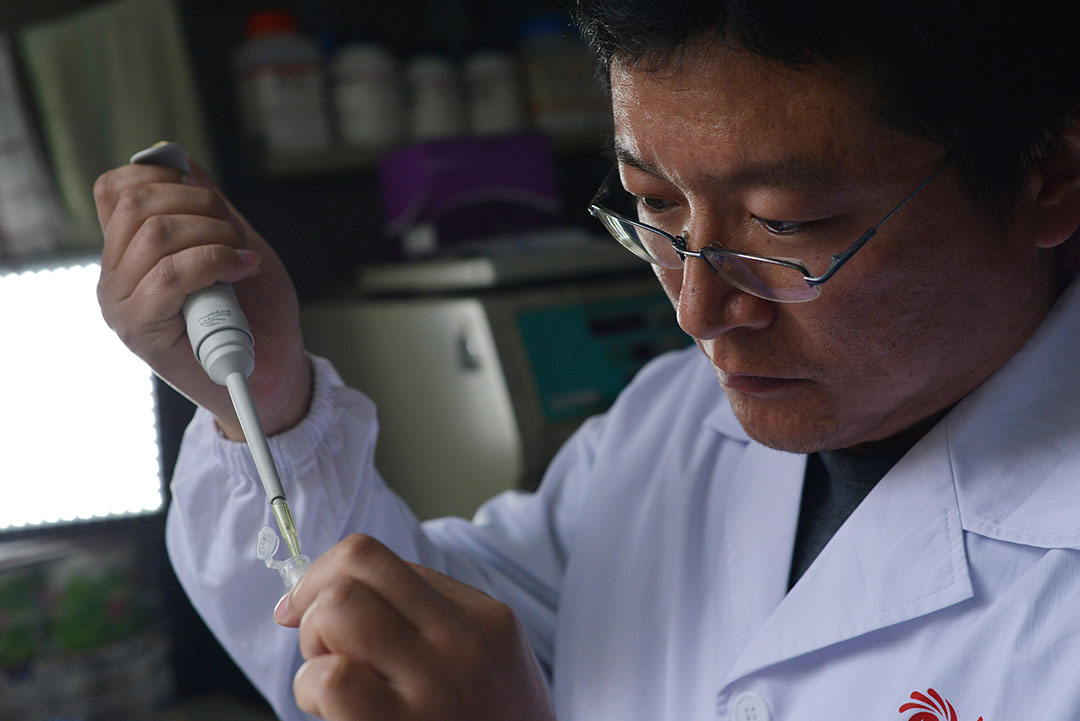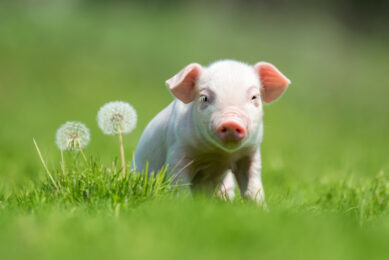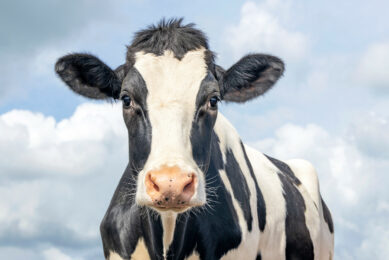Antioxidant effect of selenium yeast in ruminants

Selenium yeast is one of the micro-elements enriched yeasts and it is one of the 2 selenium sources that can be used in ruminants. The achievement of various functions of selenium in ruminants is based on the antioxidant capacity of selenium.
Organic selenium can be produced by adding proper amount of inorganic selenium in the fermentation process of yeast. Organic selenium in selenium yeast includes selenomethionine, selenocysteine, Methyl selenoic acid (CH3SeH), selenium proteins and other selenides. Among them, selenomethionine accounted for the highest proportion, followed by selenocysteine. The structures of these 2 selenide amino acids are the same as those of methionine and cysteine, just the sulphur atom is replaced by selenium (Figure 1).
Figure 1 – Selenium compositions
At present, sodium selenite is widely used as selenium source in ruminant feed. It is not only highly toxic, difficult to master the dosage, but also has low bioavailability, which will pollute the environment. As an organic selenium, selenium yeast not only has lower toxicity and higher bioavailability, but also has certain functions, including relieving heat stress, reducing somatic cell number, improving fecundity and immunity, which are all related to the antioxidant property of selenium yeast.
How is the antioxidant capacity of selenium yeast?
Compared with inorganic selenium, Angel Yeast has carried out a validation test of selenium yeast on antioxidant performance. The antioxidant capacity of YeaSel (selenium yeast from Angel Yeast) in dairy cows is as follows.
Figure 2 shows that the whole blood selenium content of selenium yeast is 20% higher than that of sodium selenate (P<0.05). this indicated that dairy cows could absorb high level of selenium yeast, and its utilisation rate was higher than that of sodium selenate. as an organic selenium source, selenium yeast is not easily affected by rumen microorganisms in the rumen, and directly enters the rumen for digestion and absorption in the form of selenomethionine, so its bioavailability is significantly higher than that of sodium selenite.>
The serum levels of glutathione peroxidase (GSH-Px) and total antioxidant capacity (T-AOC) of dairy cows in the YeaSel group were significantly higher than those in the control group (P<0.01). superoxide dismutase (sod) increased by 15.31% (p><0.05) compared with the control group, and malondialdehyde (mda) decreased by 25.87% (p><0.05), indicating that yeasel can effectively reduce lipid peroxidation of unsaturated fatty acids (>Figure 3).
How can selenium yeast play an antioxidant role?
There are 2 antioxidant defence systems: enzymatic and non-enzymatic. Many enzymes in enzymatic system take trace elements as active centres, such as GSH-Px, SOD, catalase (CAT), etc., while non enzymatic systems include vitamin E, vitamin C, β – carotene, etc.
Selenium participates in the synthesis of GSH-Px to promote the conversion of hydrogen peroxide or lipid peroxide into water and alcohol, prevent the peroxidation of lipid compounds, protect the cell membrane from the invasion of oxides, and maintain the normal structure and function of cells. Therefore, GSH-Px activity is commonly used as an indicator of selenium in vivo. The above experimental data show that selenium yeast can improve the biological activities of GSH-Px and SOD, so as to play an anti-oxidation effect.
Animals produce oxygen free radicals through enzyme system and non-enzyme system, attacking unsaturated fatty acids in biological cell membrane, causing lipid peroxidation, such as aldehyde group (malondialdehyde), ketone group, hydroxyl group, etc., so the amount of malondialdehyde can reflect the degree of lipid peroxidation in the body, and indirectly reflect the degree of cell damage. The above experimental data show that selenium yeast can reduce the content of malondialdehyde, indicating that selenium yeast can effectively reduce the lipid peroxidation of unsaturated fatty acids.
The function of selenium yeast due to its antioxidant property
 Improve immunity
Improve immunity
It has been found that GSH-Px has biological activity only when the whole blood selenium concentration reaches 60-150 ng/ml. The above experimental data showed that after adding selenium yeast, the whole blood selenium concentration reached 0.18-0.21 mg/L (180-210ng /ml), which was enough for GSH-Px to exert biological activity.
Puls (1989) reported that the GSH-Px activity was the best and the immune function was the best when the blood selenium was 160-1200 ng/ml. After the improvement of immunity, the incidence of mastitis and the number of somatic cells in milk also decreased. In practice, selenium yeast can reduce milk somatic cells by 30-50%.
In order to reduce the incidence of mastitis in dairy cows, the concentration of selenium in whole blood should be higher than 0.18 μg/ml. The above experimental data showed that the selenium concentration in whole blood was just 0.18 μg/ml after adding selenium yeast.
In addition, with the addition of selenium yeast, the transformation ability of bovine lymphocytes was enhanced, the percentage of T lymphocytes increased, and the contents of IgM, IgG and IgA in blood were increased. This is also one of the mechanisms of selenium yeast improving cow immunity.
 Anti heat stress
Anti heat stress
Heat stress in summer leads to more blood flow to the body surface for skin heat dissipation, and the blood flowing through the intestine is significantly reduced. When intestinal cells lack of blood supply of oxygen and energy, they will produce a large number of reactive oxygen species. On the one hand, reactive oxygen species (ROS) destroy intestinal cell membrane, damage cell structure and function, and affect the absorption and utilization of nutrients; on the other hand, it makes hormone metabolism disorder and affects body metabolism. As a component of glutathione peroxidase activity centre, selenium can participate in the body antioxidant system, and the antioxidant activity of selenium yeast is better than inorganic selenium.
 Improve reproductive performance
Improve reproductive performance
For bulls, selenium, as a component of GSH-Px, has antioxidant effect, so as to protect sperm cell membrane from damage, enhance sperm motility, improve fertilisation ability and embryo development ability; for cows, selenium supplementation can prevent abortion, reduce embryo death, reduce foetal membrane retention and other symptoms. In addition, the antioxidant capacity of selenium yeast also contributes to the development of embryos and improves the reproductive performance.
 Improve meat quality
Improve meat quality
This is because selenium is a component of glutathione peroxidase (GSH-Px). Glutathione peroxidase can alleviate the poisoning caused by hydrogen peroxide and lipid hydrogen peroxide, thus preventing oxidative damage of beef. In terms of reducing the drip loss of beef, selenium yeast can reduce the drip loss by maintaining the integrity of beef cell membrane, so as to improve the water system of beef.
The achievement of various functions of selenium in ruminants is based on the antioxidant capacity of selenium. The antioxidant activity of selenium yeast is stronger than that of inorganic selenium, and can play the above effects on ruminants. Adding 0.3ppm organic selenium to the diet can meet the needs of ruminants for immune enhancement, heat stress resistance, reproductive performance and meat quality improvement. Moreover, due to the high bioavailability of selenium in yeast, selenium emission from the environment can be reduced.
References are available on request
Authors: Xiao Xiangqian, Chen Zhongping, Angel Yeast Co., Lt






